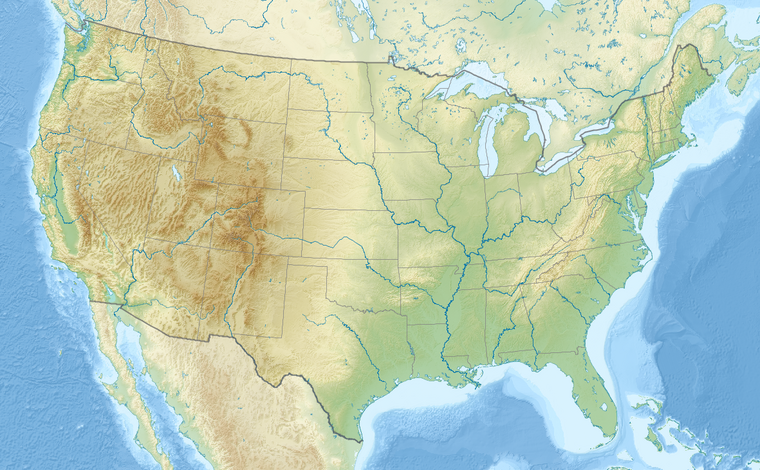1943 Major League Baseball season
This article is about the 1943 Major League Baseball season only. For information on all of baseball, see
1943 in baseball .
Sports season
The 1943 major league baseball season began on April 20, 1943. The regular season ended on October 3, with the St. Louis Cardinals and New York Yankees as the regular season champions of the National League and American League , respectively. In a rematch of the prior year's postseason, the postseason began with Game 1 of the 40th World Series on October 5 and ended with Game 5 on October 11. The Yankees defeated the Cardinals, four games to one.
The 11th Major League Baseball All-Star Game was played on July 13, hosted by the Philadelphia Athletics at the Shibe Park in Philadelphia, Pennsylvania , with the American League winning, 5–3. This was also the first All-Star Game held at night.
In order to conserve rail transport during World War II , the 1943 spring training sites was limited to an area east of the Mississippi River and north of the Ohio River . Spring training sites included the Chicago White Sox in French Lick, Indiana ; the Washington Senators in College Park, Maryland ; and the Yankees in Asbury Park, New Jersey .[ 1]
Schedule
The 1943 schedule consisted of 154 games for all teams in the American League and National League, each of which had eight teams. Each team was scheduled to play 22 games against the other seven teams of their respective league. This continued the format put in place since the 1904 season (except for 1919 ) and would be used until 1961 in the American League and 1962 in the National League.
American League Opening Day took place on April 20 with a game between the Philadelphia Athletics and Washington Senators , while National League Opening Day took place on the following day, featuring four teams. This was the first season since 1941 that both leagues opened on different days. The final day of the regular season was on October 3, which saw all sixteen teams play, also the first time since 1941 . The World Series took place between October 5 and October 11.
Teams
An asterisk (*) denotes the ballpark a team played the minority of their home games at
Standings
Postseason
Bracket
Managerial changes
Off-season
In-season
League leaders
American League
National League
Awards and honors
Regular season
Other awards
Home field attendance
Team name
Wins
%±
Home attendance
%±
Per game
Brooklyn Dodgers [ 6] 81
−22.1%
661,739
−36.2%
8,594
New York Yankees [ 7] 98
−4.9%
618,330
−32.9%
8,030
Detroit Tigers [ 8] 78
6.8%
606,287
4.5%
7,773
Washington Senators [ 9] 84
35.5%
574,694
42.4%
7,562
St. Louis Cardinals [ 10] 105
−0.9%
517,135
−6.6%
6,384
Chicago White Sox [ 11] 82
24.2%
508,962
19.5%
6,697
Chicago Cubs [ 12] 74
8.8%
508,247
−14.0%
6,777
Pittsburgh Pirates [ 13] 80
21.2%
498,740
11.1%
6,394
Philadelphia Phillies [ 14] 64
52.4%
466,975
102.9%
5,987
New York Giants [ 15] 55
−35.3%
466,095
−40.2%
6,053
Cleveland Indians [ 16] 82
9.3%
438,894
−4.5%
5,700
Cincinnati Reds [ 17] 87
14.5%
379,122
−11.2%
4,861
Philadelphia Athletics [ 18] 49
−10.9%
376,735
−11.0%
4,769
Boston Red Sox [ 19] 68
−26.9%
358,275
−50.9%
4,653
Boston Braves [ 20] 68
15.3%
271,289
−4.9%
3,523
St. Louis Browns [ 21] 72
−12.2%
214,392
−16.1%
2,784
See also
References
^ Suehsdorf, A. D. (1978). The Great American Baseball Scrapbook , p. 103. Random House. ISBN 0-394-50253-1 .
^ "Most Valuable Player Award by The Sporting News | Baseball Almanac" . www.baseball-almanac.com . Retrieved January 14, 2025 .^ "Major League Player of the Year Award by The Sporting News | Baseball Almanac" . www.baseball-almanac.com . Retrieved January 14, 2025 .^ "Manager of the Year Award by The Sporting News | Baseball Almanac" . www.baseball-almanac.com . Retrieved January 14, 2025 .^ "MLB Executive of the Year Award | Baseball Almanac" . www.baseball-almanac.com . Retrieved January 14, 2025 .^ "Los Angeles Dodgers Attendance, Stadiums and Park Factors" . Baseball-Reference.com . Retrieved September 8, 2020 .^ "New York Yankees Attendance, Stadiums and Park Factors" . Baseball-Reference.com . Retrieved September 8, 2020 .^ "Detroit Tigers Attendance, Stadiums and Park Factors" . Baseball-Reference.com . Retrieved September 8, 2020 .^ "Minnesota Twins Attendance, Stadiums and Park Factors" . Baseball-Reference.com . Retrieved September 8, 2020 .^ "St. Louis Cardinals Attendance, Stadiums and Park Factors" . Baseball-Reference.com . Retrieved September 8, 2020 .^ "Chicago White Sox Attendance, Stadiums and Park Factors" . Baseball-Reference.com . Retrieved September 8, 2020 .^ "Chicago Cubs Attendance, Stadiums and Park Factors" . Baseball-Reference.com . Retrieved September 8, 2020 .^ "Pittsburgh Pirates Attendance, Stadiums and Park Factors" . Baseball-Reference.com . Retrieved September 8, 2020 .^ "Oakland Athletics Attendance, Stadiums and Park Factors" . Baseball-Reference.com . Retrieved September 8, 2020 .^ "San Francisco Giants Attendance, Stadiums and Park Factors" . Baseball-Reference.com . Retrieved September 8, 2020 .^ "Cleveland Indians Attendance, Stadiums and Park Factors" . Baseball-Reference.com . Retrieved September 8, 2020 .^ "Cincinnati Reds Attendance, Stadiums and Park Factors" . Baseball-Reference.com . Retrieved September 8, 2020 .^ "Oakland Athletics Attendance, Stadiums and Park Factors" . Baseball-Reference.com . Retrieved September 8, 2020 .^ "Boston Red Sox Attendance, Stadiums and Park Factors" . Baseball-Reference.com . Retrieved September 8, 2020 .^ "Atlanta Braves Attendance, Stadiums and Park Factors" . Baseball-Reference.com . Retrieved September 8, 2020 .^ "Baltimore Orioles Attendance, Stadiums and Park Factors" . Baseball-Reference.com . Retrieved September 8, 2020 .
External links
References
Pre-modern era
Beginnings Competition NL monopoly
Modern era
See also
